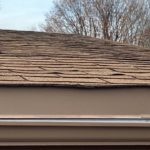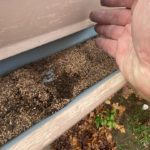Home » Learning Center » Blog »
The purpose of this article is to help you, the homeowner, recognize the signs as your roof ages. By doing so, it can help you distinguish between natural processes happening to your roof that are no cause for alarm and issues that require attention and roof repair.
Buildings experience aging factors differently, so it is difficult to predict how long shingles will last on YOUR roof.
Roof Aging is Natural
It is natural for everything to age, including your roof. The aging process begins as soon as the roof shingle is manufactured. The process is accelerated as soon as the shingles are installed to your roof because they are exposed to nature. The sun can raise the temperature on your roof to 50-70 degrees higher than ambient temperature. So… on a summer day with 90 degree temperature your roof temperature can be as high as 140-160 degrees. OUCH!!
The excessive heat and ultraviolet radiation from the sun have been shown to accelerate the aging of the asphalt layer in roof shingles. Other factors, such as pollution, wind, rain, snow, tree limbs and people walking on your roof, also contribute to the aging process.
Asphalt shingles will begin to age as soon as they are installed to your roof. Minor curling, surface cracking, blisters, algae stains, granule loss and buckling are all signs of aging.
CURLING
Curling is a sign of roof age. This is a common phenomenon on some roof shingles and is not a defect. It is natural for asphalt to age and asphalt layers to shrink over time. This curling of the edges of your shingles is because of this shrinkage. You might observe this sign of roof age from the ground.
SURFACE CRACKING
You probably won’t see this sign of roof age ground, but you might see them while hanging Christmas lights. These surface cracks are a sign your roof is aging. Asphalt roof shingles have protective oils. Intense heat from the sun (see above) often causes protective asphalt oils to be depleted, causing minor cracks. Keep in mind that these normal weathering characteristics are not cause for alarm as long as your shingles are still performing their intended purpose of shedding water, and as long as there is no other damage to your roof shingles. Cracks that penetrate through the fiberglass mat can/will cause leaks.
BLISTERS
Occasionally, naturally occurring small, circular raised areas known as blisters may appear on your roof shingles. Like surface cracks, you probably won’t see this sign of roof age from the ground. These pockets may vary in size and be open (granules are missing, exposing the asphalt) or closed. Blisters are often a direct result of underventilated attics or excessive use of plastic cement. Closed blisters are not a reason for concern as long as your roof is not leaking… However, open blisters mean asphalt is exposed and immediate attention is required for a roof repair before leaks occur.
ALGAE STAINS (DARK STREAKS)
You will definitely be able so see this sign of roof age from the ground, or even while driving by a house with algae. Dark brown or black algae patches may appear on roofs. Algae naturally grows in moist, humid areas and the streaks result in a dirty roof are often more visible on lighter colored shingles. This naturally occurring stain caused by algae growth will not affect your shingles ability to shed water. Here, in Oklahoma, these streaks usually appear on the north slope of the roof, as the North Slope receives the least sun and moisture remains the longest.
GRANULE LOSS
Extra granules are used in the manufacturing process and some granule loss is to be expected during the early years of your roof. Other factors, such as people walking on your roof, wind, rain, hail or brushing tree limbs may cause damage and loose granules. These loose granules may be seen on your driveway or in the gutters when they are cleaned.
- Aging Roof
- Loose granules in gutter
BUCKLING
While not technically a sign of aging, a distortion of shingles known as buckling can occur months after they are originally installed. Lack of adequate attic ventilation can increase the moisture content of the decking material. This may cause expansion and movement of the wood deck which can lead to ‘buckled’ shingles.
| WHAT’S NORMAL? | WHAT’S NOT? |
| Curling
Surface cracking Closed blisters Algae stains Slight granule loss |
Broken shingles
Cracks where the fiberglass is visible Open blisters with cracked asphalt Exposed asphalt due to granule loss |
| Normal Aging | In Need of Repair |



Recent Comments